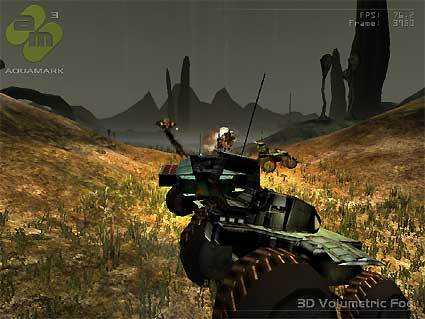Aquamark3: Accurate Benchmarking for Old and New (DirectX9) Apps?
Conclusion
We can unequivocally say that AquaMark 3 is a very useful benchmark tool. The fact that it's not a full DirectX 9 benchmark is no penalty, since it's based on a already used game engine and this means there's the need for compromises.
It's also clear that AquaMark 3 is not totally applicable to DirectX 9 titles, such as Half-Live 2, which will hit the shelves during the next months. This is because every game engine is different. Valve's source engine, for example, uses different shader effects and also uses high dynamic range effects. However, not every game will use water surfaces and HDR (High Dynamic Range) effects.
AquaMark 3 should be understood as a good supplement to the range of benchmarking software out there. It definitely offers a good impression of different graphic cards' performances. Innovative technologies, such as HyperThreading, for example, show that the Krass 3D engine is not dated. HT support is one feature which even Half-Life 2 can't offer.
The issues associated with the NVIDIA drivers also cloud the launch of AquaMark 3. Only the driver v44.03 produces correct results in AquaMark 3 because v45.23 and v51.75 are not rendering what they should. NVIDIA promises a fix soon and as soon as we get the new drivers, we'll check to see if the issues were solved.
But end-users can finally expect a solution for the problem with the release of a new official driver - which should be available soon. Then we'll see if NVIDIA can score better than what the v43.03 drover offers, which performs very bad compared to the ATI cards. NVIDIA also will have a hard time explaining why their cards run faster with newer drivers. Since NVIDIA published new driver optimizations guidelines (see NVIDIA's Optimization Guidelines ), we wonder if the performance increase of v45.23 and 51.75 came from AM3 specific optimizations - which would possibly hurt their guidelines.
Get Tom's Hardware's best news and in-depth reviews, straight to your inbox.
